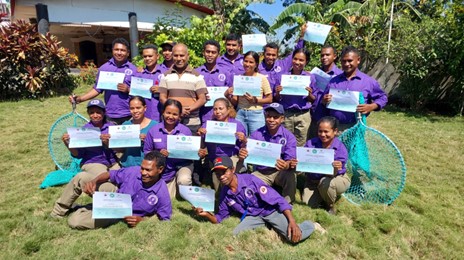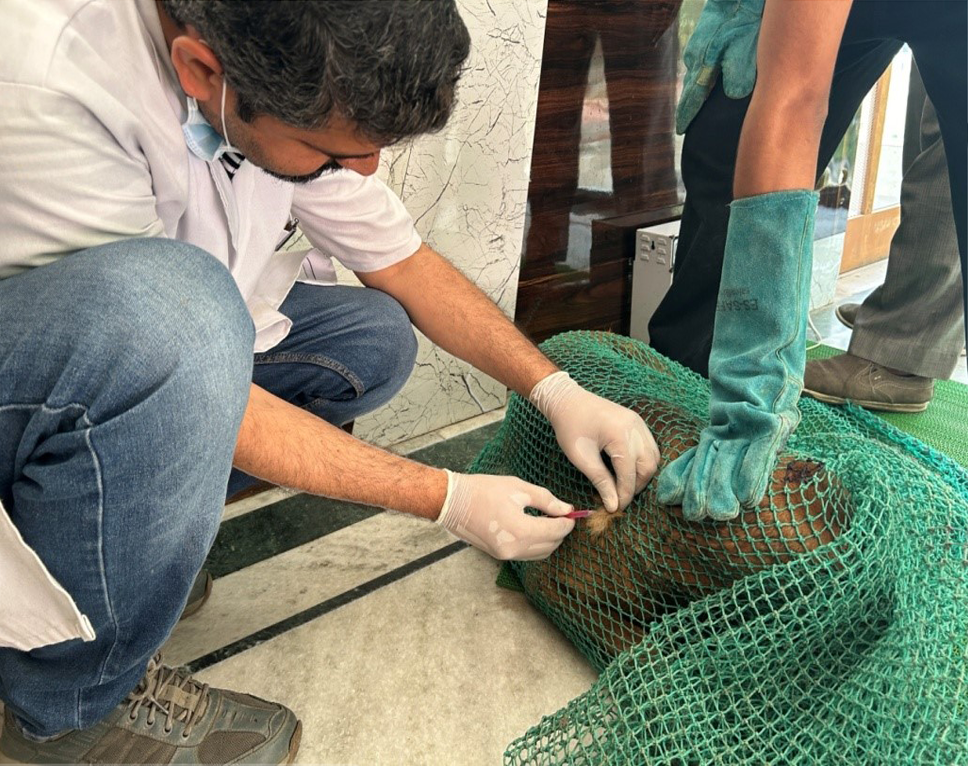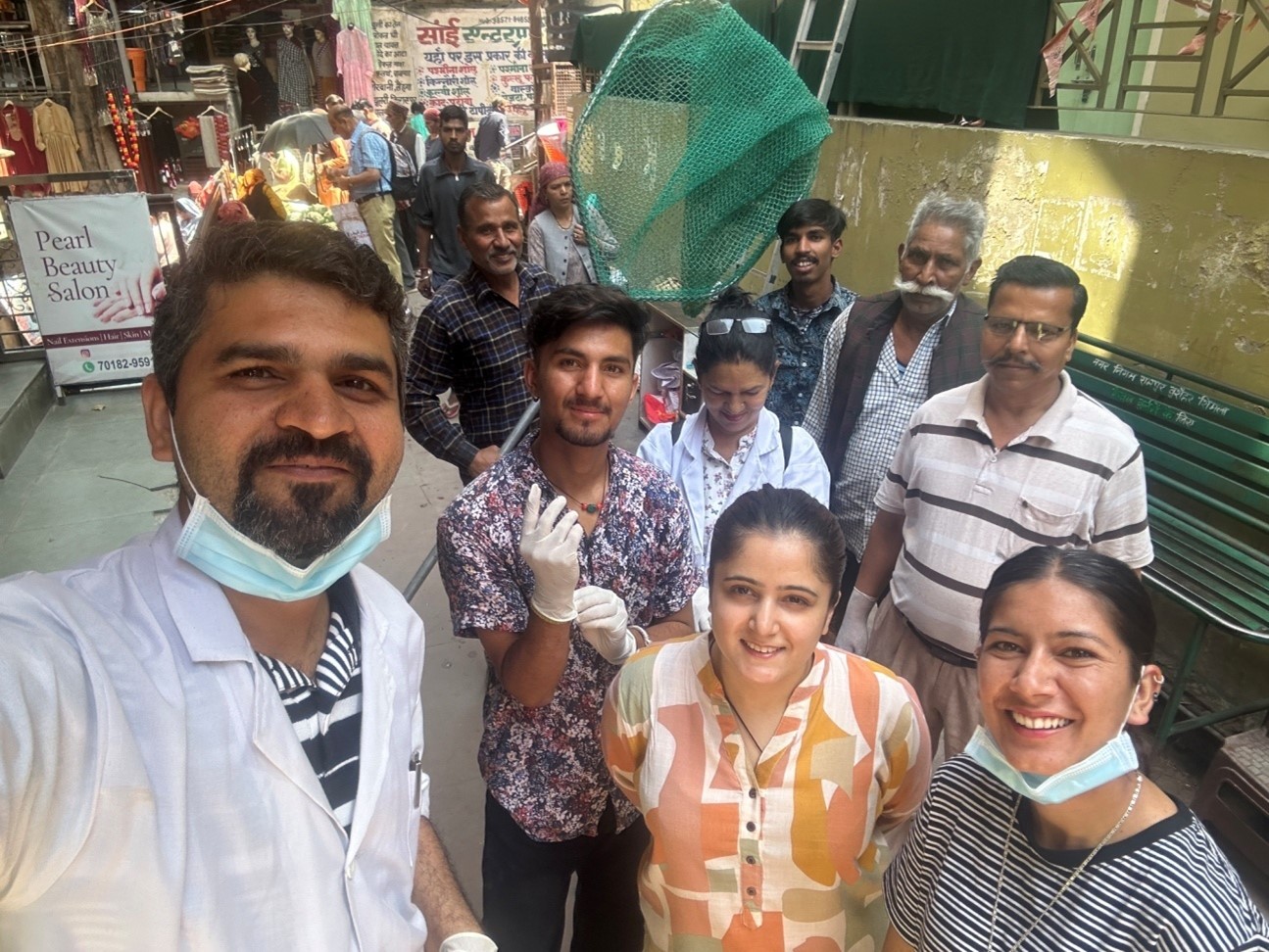
Rabies is an almost 100% fatal zoonotic disease which is preventable through timely and adequate post-exposure prophylaxis and prevention of the disease at source, i.e., mass dog vaccination.
The northern state of Himachal Pradesh (HP), India features hilly terrain, posing unique challenges to implementing any mass dog vaccination efforts. For any such activity to succeed, implementation needs to be done on a large scale, requiring significant infrastructure and manpower – neither of which are currently available. Facing these challenges, the Department of Animal Husbandry HP adopted a surveillance-based mass dog vaccination (SbMDV) strategy to control rabies.
(May 2024) Rabies surveillance app-based technology, using WVS data collection app. (cr. Dr Anil Kumar Sharma, Department of Animal Husbandry HP, India)
A mobile application for rabies surveillance
In collaboration with the NGO Mission Rabies, the Department of Animal Husbandry HP developed a mobile application for rabies surveillance. This World Veterinary Services (WVS) data collection app was customized to be used in District Shimla, Himachal Pradesh (mapping 6 subdivisions of the district with data from veterinary institutes in the area) on a pilot basis, from March 2023.
To function properly, veterinary services staff and volunteers log every animal rabies case in the district into the app. Since the start of this project, 24 suspected, probable, and confirmed rabies cases have been reported in District Shimla.
(May 2024) Mass dog vaccination campaign conducted by Dr Anil Kumar Sharma, Veterinary Officer, VPC-Rampur, Department of Animal Husbandry HP in collaboration with Humane People NGO and MC-Rampur Bushahr, HP India. (credit: Department of Animal Husbandry HP, India)
Surveillance-based mass dog vaccination
The Department of Animal Husbandry HP conducted surveillance-based mass dog vaccination activity, following a method covering a 10-to-15-kilometer diameter from the epicentre. These methods were developed by observing and understanding the movements of rapid dogs in furious form. Observation proved that almost all dogs wander in a radius of 5 – 7.5 km or a 10 – 15 km diameter (which marks the zone for mass dog vaccination), from east to west and from north to south. Disease control is facilitated by implementing SbMDV in identified zones around the epicentre, as dogs are the main transmitters of rabies to humans and other animals.
The World Organisation for Animal Health (WOAH) recommends mass dog vaccination as a key component of a successful control programme for dog-mediated rabies. Recommendations are that vaccinating at least 70% of dogs in at-risk areas can reduce human cases to zero. WOAH also recommends that countries enhance surveillance and disease reporting to monitor trends and detect potential new cases as early as possible.
is facilitated by implementing surveillance-based mass dog vaccination in identified zones around the epicentre, as dogs are the main transmitters of rabies to humans and other animals.
(May 2024) Dr Anil Kumar Sharma, Department of Animal Husbandry HP, joined by Ms Ekta Dhiman, President of Humane People NGO, Ms Payal Mehta and Mr Rajat Negi Daphan from other local NGOs, along with municipal council workers, showing an example of multi-sectoral collaboration. (credit: Dr Anil Kumar Sharma, Department of Animal Husbandry HP, India)
Results and what’s next
Surveillance and reporting are not limited to dogs. If cases of rabies are also reported in cattle, sheep, goats, cats or human beings, SbMDV methods must then be carried out in that area. Results thus far have been promising: following the implementation of SbMDV, despite 24 cases of animal rabies and 2 cases of human rabies originally being reported, no further rabies cases were observed or detected.
Using the developed mobile application as a tool for SbMDV has thus far proven successful. The plan is to expand the app’s coverage to the entire state of Himachal Pradesh.
In countries where the disease is endemic, WOAH recommends that rabies control programmes include measures to control and reduce the risk of infection in animals, thus creating a barrier between the animal source and humans. Human deaths from rabies exposure can be prevented by developing and implementing a coordinated strategy against the disease using the One Health approach.
To find out more about the key components of a successful national control programme for dog-mediated rabies, visit our resource page on rabies control programmes.





